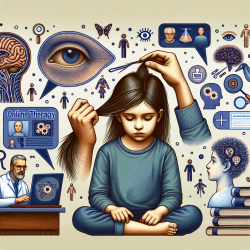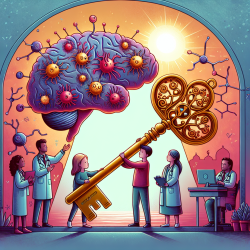Understanding Trichotillomania: A New Perspective for Practitioners
Trichotillomania, commonly known as hair-pulling disorder, is a condition characterized by recurrent urges to pull out one's hair, leading to noticeable hair loss and significant distress. Despite its prevalence, affecting approximately 1-2% of the population, the disorder remains poorly understood, particularly in terms of the subjective experience of those who suffer from it. This lack of understanding can create barriers to effective treatment and empathy from clinicians and the public alike.
Recent research titled The Phenomenology of Hair Pulling Urges in Trichotillomania: A Comparative Approach offers valuable insights that can enhance a practitioner's ability to support individuals with trichotillomania. By comparing hair-pulling urges to everyday urges, such as those for unhealthy foods, the study provides a relatable framework that can improve understanding and destigmatize the condition.
Key Findings and Their Implications
The study reveals that hair-pulling urges, while more severe, share similarities with common urges like those for unhealthy foods. This comparison helps demystify the disorder, making it more relatable and understandable. Here are some critical takeaways for practitioners:
- Empathy through Comparison: By understanding that hair-pulling urges can be likened to everyday urges, practitioners can foster greater empathy and strengthen therapeutic alliances, leading to better treatment outcomes.
- Destigmatization: Relating hair-pulling urges to common experiences helps reduce the stigma associated with trichotillomania, encouraging more open communication between patients and practitioners.
- Targeted Interventions: Recognizing the situational characteristics that make hair-pulling urges more challenging to resist can guide the development of more effective, targeted interventions.
Practical Steps for Practitioners
Practitioners can leverage these insights to enhance their therapeutic approach:
- Build Empathy: Use the comparison to everyday urges to build a deeper understanding and empathy for the patient's experience.
- Educate and Communicate: Educate patients and their families about the nature of trichotillomania using relatable comparisons to everyday urges.
- Develop Tailored Strategies: Create personalized intervention strategies that consider the unique situational factors contributing to the severity of hair-pulling urges.
By integrating these findings into practice, clinicians can improve their ability to support individuals with trichotillomania, ultimately leading to better outcomes.
To read the original research paper, please follow this link: The Phenomenology of Hair Pulling Urges in Trichotillomania: A Comparative Approach.










